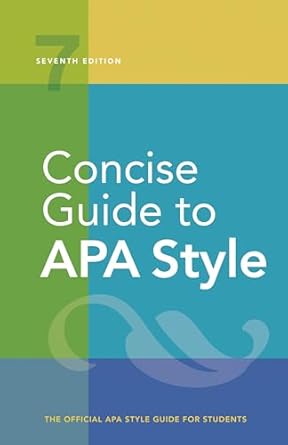[toc]
author element formatting a comprehensive guide
Concise Guide to APA Style: 7th Edition (OFFICIAL)
Page 241 Review
Decoding the Author Element: A Deep Dive into Reference Formatting
The meticulous crafting of references is crucial in academic and professional writing, ensuring proper attribution and credibility.
This analysis delves into the intricacies of formatting the “author element” as outlined in a comprehensive guide, providing insights and practical examples for accurate citation.
Understanding Organizational Authorship
In certain instances, identifying the author of a work can be nuanced.
As the text states: “for that annual report, the organization would be listed as the author.
Likewise, in the reference for a page from an organizational or government agency website, the organization or government agency itself is considered the author, unless otherwise specified.” This highlights the importance of recognizing organizational or governmental bodies as authors when they are the primary source of the content.
Locating the author information may involve checking “an ‘about us’ or acknowledgments page.” When the author remains elusive, the guidance is clear: “treat the work as having no author.”
The Format of the Author Element: A Detailed Examination
The following sections cover the detailed rules for formatting the author element, which forms the bedrock of citation accuracy.
Inverting Author Names
The initial rule establishes the fundamental structure: “Invert all individual authors names, providing the surname first, followed by a comma and the initials: Author, A.
A.” This convention ensures consistency and facilitates alphabetical sorting in reference lists.
Separating Author Names and Initials
Clarity is paramount when dealing with multiple authors. “Use a comma to separate an author’s initials from additional author names, even when there are only two authors; use an ampersand (&) before the final author’s name: Author, A.
A., & Author, B.
B.” This ensures readability and avoids ambiguity.
However, an exception is made for group authors: “Do not use a comma to separate two group authors: American Psychological Association & National Institutes of Health.”
Serial Commas and Multiple Authors
For lists with three or more authors, the serial comma plays a crucial role: “Use a serial comma before the ampersand (&) with three or more authors.” This improves clarity and avoids potential misinterpretations.
Handling a Large Number of Authors
When dealing with extensive authorship, a specific truncation rule applies: “Provide surnames and initials for up to and including 20 authors.
When there are two to 20 authors, use an ampersand before the final author’s name: Author, A.
A., Author, B.
B., & Author, C.
C.
When there are 21 or more authors, include the first 19 authors’ names, insert an ellipsis (but no ampersand), and then add the final author’s name (see Chapter 10, Example 4).” This pragmatic approach balances completeness with conciseness.
Spacing and Hyphenated Names
Consistency in formatting extends to spacing and hyphenated names: “Use one space between initials.
When given names are hyphenated, retain the hyphen and include a period after each initial but no space (e.g., Xu, A.-J., for Ai-Jun Xu).
When the second element of a hyphenated name is lowercase, treat it as a single name (e.g., Raboso, L., for Lee-ann Raboso).”
Including Suffixes
Suffixes such as “Jr.” and “III” are incorporated with proper punctuation: “Use commas to separate initials and suffixes such as Jr. and III: Author, A.
A., Jr., & Author, B.
B.”
Crediting Nonprimary Authors
The text addresses the inclusion of nonprimary authors credited with the word “with”: “If nonprimary authors are credited using the word ‘with’ (e.g., on a book cover), include them in the reference list entry in parentheses: Meyers, K. (with Long, W.
T.).
The in-text citation, however, refers to the primary author only: (Meyers, 2019).”
Conclusion
Mastering the intricacies of author element formatting is essential for producing credible and well-researched work.
By adhering to these guidelines, writers can ensure accurate attribution and uphold the integrity of their scholarship.
Buy full ebook for only $18: https://www.lulu.com/shop/american-psychological-association/concise-guide-to-apa-style-7th-edition-official/ebook/product-rmzpq54.html?page=1&pageSize=4
Author Element Formatting A Comprehensive Guide
Read more: APA 7th Edition Citation Guide: Chapters in Edited Books


Leave a Reply